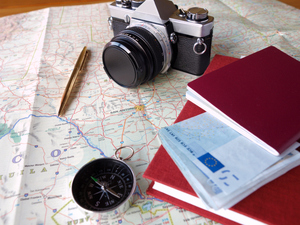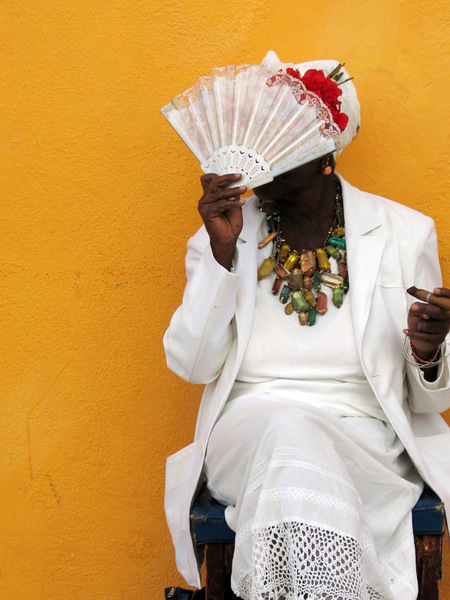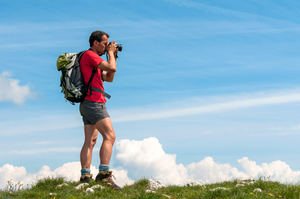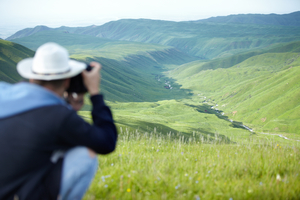Whether you are traveling to distant lands or staying within the boundaries of your own country, you will get the best results by using photography tips recommended by professionals and experienced amateur photography buffs
Once you decide your destination, it’s important to do some research in order to properly capture the flavor of the area you are visiting. Getting a local guide would help to find the best locations to take pictures and explore, however, there are also guides for multiple other countries to help you with your photography research. In addition, you could make a list of the area’s natural highlights, and include cityscapes, bridges, cathedrals, mountains, ocean, lakes, natural rock formations, historical locations, and all other places of interest.
1. Keep a Journal
When traveling, it’s very easy to forget name places, unusual spellings, flora and fauna species, and descriptions of the images photographed. A small notebook with pen attached, will keep you organized when you peruse your files at the trip’s conclusion. Include local lore in your notes when applicable, as well as correct spellings of locations, buildings, and people included in your images. Some people decide to keep their journals online through social media platforms like Instagram and Facebook. But it’s different for everyone so experiment and find what you like.
2. Make Acquaintance
When you smile at the people you meet, they almost always smile back. You may want models in some of your images, to enhance a landscape or cityscape, and friendliness with the locals will gain you their trust. During his presentation at the 2014 Exposure Show, Kristian Bogner (World Class Professional Photographer, Nikon Ambassador and Manfrotto Pro Photographer) explained the importance of making the locals feel included in the photographic process. Being included in your images can make them very happy, and usually they are not expecting payment for their inclusion. Although it may not always be necessary, it’s a good idea to include a few model-release forms in your supplies.
3. Check Your Equipment
It’s critical to check over all your equipment. If you have been thinking about buying a new lens, tripod, or other camera accessories for your trip, Henry’s has an expansive selection of photography equipment to meet all your needs. Be sure you have extra memory cards and batteries when you pack your bag. Prepare for the unexpected with a first aid kit, flashlight and batteries, rain poncho, and an extra pair of shoes. If your trip entails physical demands, such as hiking or climbing, Kristian Bogner suggests you do some physical training in advance of the trip to avoid injury and disappointment.
4. Don’t Over-pack
It’s important not to over-pack. Too often people are burdened down with all their luggage and bags, and they discover some locations are just too difficult to traverse unless you travel light. Bring only the supplies you need. It isn’t necessary to bring every camera and lens you own. Choose the equipment that will do the best job for the trip you are planning. Resist the urge to pack an extra few items “just in case an opportunity presents itself.” Pack just enough clothing to get by for a few days. It can be washed when necessary.
5. Go Exploring
Explore the surroundings, avoid tourist attractions, eat where the locals eat, and walk up and down all the tiny streets where everyday people walk. I’ve heard from a friend that they avoid tourist attractions and drive through off-road terrain to get to those spots that no one else might have photographed before. This could lead to finding towns and villages you never thought you’d find. You will start to experience how the people of the area live, play, and work. Don’t look at your watch, but do look at all that surrounds you, including the buildings, streets, animals, children, festivities, musicians, crafts people, workers, businesses, and a thousand other things the observant photographer will notice. Engage the people, smile, toss some coins to the street performer, and capture people as they live. View the area from all angles by standing on something high to shoot down and sitting or lying position to look up. Frame images with windows, doors, and archways. Incorporate as much texture as possible into the scene. The landscapes around your destination may include mountains, desserts, rivers, or other beautiful scenery. One of the best ways to see the landscape is from above, and there are many places where you charter a plane and get a tour of your surrounding from the sky. Capture the essence of the area, including the vistas, wildlife, and people.
Travel photography soon becomes a passion, and fulfills the artistic nature dwelling in every photographer. A large percentage of fine art photography is generated from travel photography. Plan your trip carefully and you will reap the rewards.







